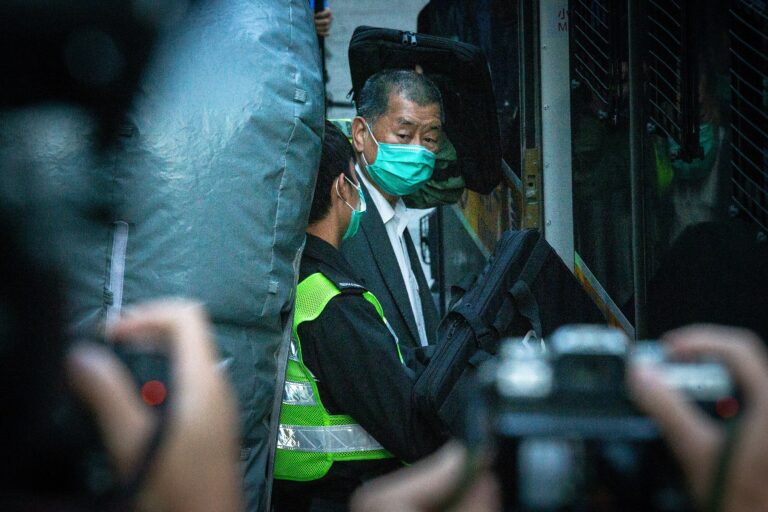We were drawn to his small farm by the sight of nine Holsteins tethered outside. The dairyman, a member of the Manchu minority, was happy to show me his small herd of milk cows, gesturing with his calloused hands as he explained that he milked them three times a day. The cows were kept on short tethers and fed on cornstalks, the only crop that would grow in the dry mountain valleys north of Beijing. He and his wife were kept on short tethers as well, by a government that dictated how many children they could have.
“We have one child, a son,” he told me when I asked about his family. “He is in school right now.”
“Would you like to have more children?” I asked.
“Of course we would like to,” he shrugged. “But that is not allowed.”
“But you are a Manchu,” I objected. For decades the Chinese government has insisted to the outside world that minorities like the Manchus were exempt from the one-child limitation. “Can’t minorities have second and even third children?”
Long experience has taught the people of China that it is dangerous to criticize the government, even indirectly. So the dairyman was circumspect. But he did tell me about the heavy fines imposed on those who violated the one-child policy in this Manchu village. “It depends on your income,” he said, “but it can run into the tens of thousands of Chinese yuan.”
A Sadly Familiar Tale
It was a story that I heard repeated all over Fengning county. I had come to this part of northern Hebei province because it had a large population of Manchus. In fact, it is officially designated by the People’s Republic of China as a “Manchu Autonomous County,” as if the Manchus themselves ran things. But the Manchus of Fengning are no more free to manage their own affairs than are the Tibetans of the so-called “Tibetan Autonomous Region.” And it was Manchus that I wanted to meet and talk with.
From the beginning of the one-child policy, the Chinese government has maintained that minorities are exempt from the one-child limitation and are allowed to have two or even three children. The rationale is obvious: Imposing a one-child policy on a minority group would shrink its numbers over time, and could set it on a path towards ultimate extinction. The outside world has generally bought into this generous-sounding claim. If you Google “China’s One-Child Policy and Minorities,” as I have, you will find dozens of sites blithely repeating Beijing’s mantra that the policy does not apply to minorities.
I had doubted this claim from the beginning, and for good reason. Back in the eighties, I collaborated with an American doctor who documented the forced abortion and sterilization of Tibetan women who threatened to violate the one-child policy.
And this is exactly what l heard in Fengning. Over the course of a day, we spoke with several dozen Manchus, all of whom told us the same thing: that the same childbearing regulations that apply to their Han Chinese neighbors apply to them as well.
There was one other reason l had come to Fengning. It is a U.N. Population Fund “model family planning county,” where the U.N. agency assures us that women are free to choose the timing of their childbearing, where there is no forced abortion or forced sterilization, and no targets for sterilizations or quotas for birth. All of these claims were disputed by the Manchus with whom I spoke.
The UNFPA has also repeated, at various times and places, the Chinese claim that minorities are exempt from the policy. At the same time, it is also helping to fund “family planning” services not just in Fengning but in other minority regions as well.1 This is yet another instance where the UNFPA’s claim that it is a moderating force in China does not accord with the reality of its complicity in coercion.
Our next stop was another UN. Population Fund model family planning county: Luan county in eastern Hebei province. Here, as in most of the villages we visited, we found evidence that the population control program continued to be aggressively enforced. There were large blackboards on which were written the rewards for abiding by, and the penalties for violating, the one-child policy.
During a long day of interviews, our most striking encounter was with a pleasant woman who had the misfortune — although she didn’t seem to regard it as such — of being mute. She wore a radiant expression on her face, and was one of the most lively and energetic people we met during our entire stay.
We met when I stopped in a village to admire some of the new, modern homes that were replacing ancient brick and tile structures. She approached us, and by gestures made it clear that she wanted to invite us into her new home. It came with tile floors (replacing the packed earth floor) and glass windows (replacing paper), and a heater by the bed (replacing the old kang, where the flue from the cookstove ran under the bed.) Her husband carne back from the fields at that point, and proved just as welcoming.
It was only when I brought the conversation around to children that their faces fell. They weren’t allowed to have children, the husband told me.
His wife had been sterilized.
It is not widely understood in the West that China’s one-child policy is, at the same time, a eugenics policy. “Defectives,” as they are called in China, are forbidden to have children. If they are given permission to marry, they are first sterilized to ensure that they don’t contribute their “defective” genes to the future gene pool by having children.
There are many causes of muteness, not all of which are genetic and therefore heritable. This lovely woman’s children — had she been allowed any — would not necessarily have inherited her condition. But these nuances are lost on Chinese officials who are under orders to enforce the policy without exception.
Beijing denies that their policy of sterilizing the “unfit” is in any way an effort to achieve racial superiority. They are, they say, merely trying to breed a better Chinese man and woman. This seems to me a distinction without a difference.
One thing is certain: In this “model family planning country,” where the UNFPA has certified that women are free to determine the timing of their childbearing, this woman was denied children altogether.
Our next stop was another “model family planning county,” Wenshui county in Shanxi Province. Here, too, we found that huge fines were being levied against those who violated the policy. It has long been the opinion of the State Department that such fines, equivalent to three to five years income, clearly violate the UNFPA’s claim that it runs “voluntary, client-centered” programs.
Out-and-out coercion continues as well. We found that the rigid enforcement of the one-child policy (contrary to the UNFPA’s promises) had recently resulted in violence in Wenshui. A family planning official had been hounding young mothers to have abortions, and had even threatened to arrest them. One night, as the official was sleeping, a bomb was thrown into her house through the living room window. No one was hurt by the small explosion, but the official, I was told, has since stayed pretty much to herself. She has ceased harassing young, pregnant women, at least for the time being.
(To be continued in the next issue)
Endnotes
1 See MDGF-1692: The China Culture and Development Partnership Framework, accessed on June 21, 2009, at http://sdnhq.undp.org/opas/en/proposals/suitable/189. Here the U.N. Population Fund is involved in a project to promote family planning among minorities. Their goal is an “Increased proportion of clients seeking MCH/FP counseling services in program locations.”






